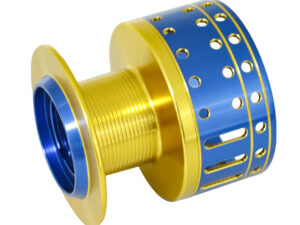Did you know that the global electroplating market is projected to exceed $28.19 billion by 2027? With industries constantly seeking advances in quality and efficiency, techniques like electroplating and spraying have become essential in the field of turning machining. As companies strive for excellence and durability in their products, improving these techniques has never been more important. In this blog, we will dive deep into how to enhance the quality of electroplating and spraying technology within turning machining processes and outline practical solutions to key challenges.
Understanding Electroplating and Spraying Technology
What is Electroplating?
Electroplating is the process of depositing a layer of metal onto an object to improve its properties such as corrosion resistance, wear resistance, and aesthetic qualities. By using electrical current, metal ions from the solution adhere to the surface of the substrate, forming a uniform and durable layer. It is widely used in various industries, including automotive, aerospace, electronics, and jewelry.
The Role of Spraying Technology
Spraying technology, on the other hand, involves the application of a coating material onto a surface to provide protection and enhance performance. This can include liquid coatings, powder coatings, or thermal spray coatings. Spraying is particularly important in manufacturing processes where objects need to withstand various environmental factors, including heat, moisture, and mechanical stress.
Why Turning Machining Matters
Turning machining is a pivotal process in manufacturing, particularly for producing cylindrical parts. This machining technique allows for the precise shaping of metals and polymers, making it indispensable in creating parts for industries such as aerospace, medical devices, and automotive components.
Key Challenges in Electroplating and Spraying
While electroplating and spraying techniques offer numerous benefits, several challenges can arise that impact the quality of the final product:
Detailed Solutions for Improvement
To improve the adhesion and quality of the electroplated or sprayed coat, proper surface preparation is essential. This includes cleaning, degreasing, and mechanical treatment. Here are some effective strategies:
The composition of the electrolyte is crucial for achieving high-quality electroplating. Key recommendations include:

Temperature fluctuations can severely disrupt the plating or spraying process. To maintain optimal conditions:
Different spraying techniques can have a significant impact on coat quality. To ensure high quality, consider the following techniques:
Controlling environmental conditions is crucial for optimal outcomes. Here are several measures that can be taken:
Measuring Success in Electroplating and Spraying
To ensure that improvements are yielding the desired results, it is vital to have a robust system for measuring quality and consistency. Here are several methods:
As we have explored, improving the quality of electroplating and spraying technology in turning machining is a multifaceted undertaking that requires attention to detail at every stage of the process—from surface preparation to environmental management. By implementing these strategies, manufacturers can not only enhance the quality of their products but also boost operational efficiency and customer satisfaction.
Understanding the importance of these technologies is essential in today’s manufacturing landscape. With industries striving for higher durability and performance standards, the impact of quality electroplating and spraying cannot be overstated. Companies that prioritize these improvements will not only thrive in terms of product quality but will also set themselves apart as leaders in the ever-evolving world of machining technology.
With the insights provided in this blog, readers are encouraged to consider how these advancements can be applied within their work environments. Embracing these practices can lead to remarkable outcomes, bringing about a new era of quality in electroplating and spraying technology.














